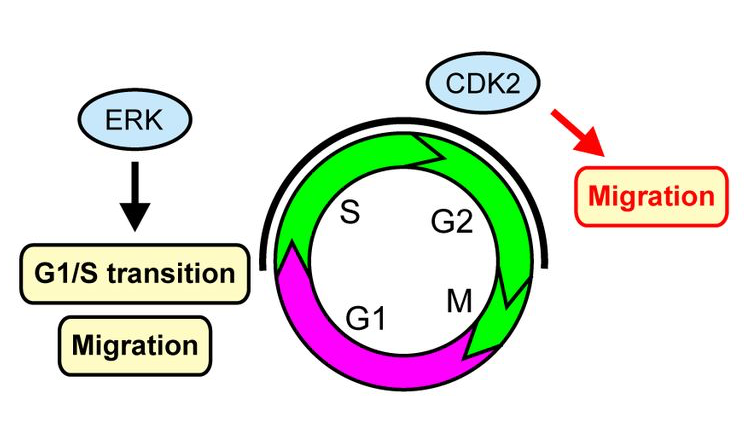Yumi’s paper is out on BioRxiv
May 24, 2020

Intravital imaging reveals cell cycle-dependent satellite cell migration during muscle regeneration
During muscle regeneration, extracellular signal-regulated kinase (ERK) promotes both proliferation and migration. However, the relationship between proliferation and migration is poorly understood in this context. To elucidate this complex relationship on a physiological level, we established an intravital imaging system for measuring ERK activity, migration speed, and cell-cycle phases in mouse muscle satellite cells. We found that in vivo, ERK was maximally activated in satellite cells two days after injury, and this is then followed by increases in cell number and motility. With limited effects of immediate ERK activity on migration, we hypothesized that ERK increases migration speed in the later phase by promoting cell-cycle progression. Our cell-cycle analysis further revealed that in satellite cells, ERK activity is critical for the G1/S transition, and cells migrate more rapidly in the S/G2 phase three days after injury. Finally, migration speed of satellite cells was suppressed after CDK1/2, but not CDK1, inhibitor treatment, demonstrating a critical role of CDK2 in satellite cell migration. Overall, our study demonstrates that in satellite cells, the ERK-CDK2 axis not only promotes the G1/S transition, but also migration speed, which may provide a novel mechanism for efficient muscle regeneration.
